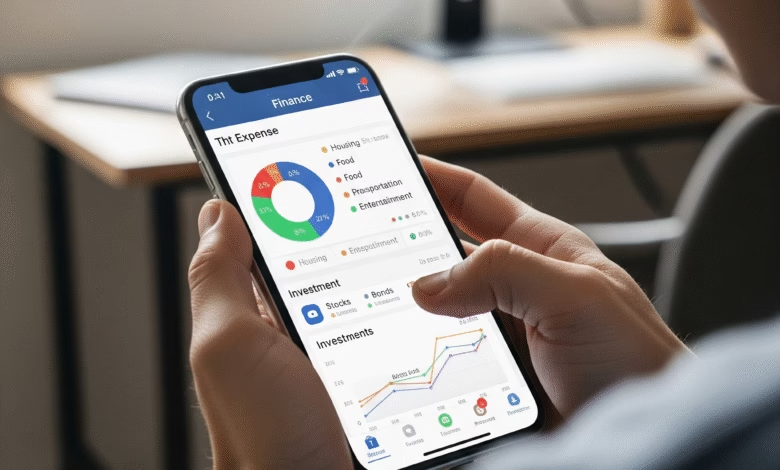How insurance can help protect long-term investments
Understand how insurance can save your investments tomorrow

When you think about investing for the long term, you likely focus on stocks, bonds, mutual funds, or real estate. You meticulously research companies, diversify your portfolio, and track market trends, all with the goal of building wealth. But what if a sudden, unexpected event derailed your entire plan? A serious illness, a disabling accident, or an untimely death could force you to liquidate your investments prematurely, potentially wiping out years of hard work.
This is where insurance comes in. While it may not seem like a traditional investment tool, insurance is one of the most powerful and often-overlooked ways to protect your long-term financial goals. It acts as a shield, ensuring that no matter what life throws at you, your investment strategy remains intact. In this article, we’ll explore how different types of insurance can serve as a critical layer of protection for your investments, allowing them to grow uninterrupted for years to come.
The Role of Life Insurance: Protecting Your Legacy and Your Portfolio

Life insurance is not just about providing for your family after you’re gone. It’s a key component of a comprehensive financial plan, designed to protect your assets and ensure your long-term goals are met, even in your absence.
Preventing Forced Asset Liquidation
Imagine you’ve built a substantial investment portfolio. If you were to pass away unexpectedly, your family would suddenly face a loss of income and a mountain of financial obligations, such as a mortgage, education expenses, and daily living costs. Without adequate life insurance, they might be forced to sell your valuable assets—like stocks or real estate—at a time when the market is down. This can result in significant losses and derail the financial future you worked so hard to build.
A life insurance policy provides a tax-free lump sum of cash (the death benefit) that can be used to cover these expenses. This allows your beneficiaries to leave your investments untouched, giving them the time they need to navigate the financial transition without pressure to sell assets under duress.
Estate Planning and Tax Efficiency
For those with significant wealth, life insurance is a powerful tool for estate planning. The death benefit can be used to pay for estate taxes, ensuring that your heirs don’t have to sell off valuable family assets or businesses to cover tax liabilities. This keeps your legacy intact and ensures your wealth is transferred to the next generation efficiently.
Additionally, certain types of life insurance, like whole life insurance, can have a cash value component that grows on a tax-deferred basis. This provides an additional source of savings that you can access later in life through loans or withdrawals, without impacting your investment portfolio.
The Role of Disability Insurance: Shielding Your Income and Your Investments
Disability insurance is often called “paycheck protection,” and for good reason. It’s designed to replace a portion of your income if you become unable to work due to an illness or injury. For investors, this is a non-negotiable form of protection.
Maintaining Your Investment Contributions
One of the cornerstones of long-term investing is consistency. Regularly contributing to your retirement accounts (like a 401(k) or IRA) is what allows compounding to work its magic. A sudden disability that prevents you from working would cut off this vital stream of contributions. Without disability insurance, your investment growth could grind to a halt.
A disability policy provides a monthly income stream, allowing you to continue making your planned contributions to your investment accounts. This ensures your long-term financial plan stays on track, even when you’re physically unable to work.
Preventing the Liquidation of Retirement Savings
Without a safety net like disability insurance, an investor who loses their income due to an injury might be forced to tap into their retirement savings to pay for daily living expenses. This is a double whammy: not only do you stop contributing, but you also have to withdraw money from your accounts, potentially incurring taxes and early withdrawal penalties. This can set your retirement plan back by years, if not decades.
Disability insurance prevents this by providing the income you need, leaving your retirement and investment accounts untouched and free to continue growing.
The Role of Health Insurance: Protecting Your Savings and Wealth

We often think of health insurance as a basic necessity, but it is one of the most critical tools for protecting your wealth. A major medical emergency can be financially devastating, even for the most prepared investors.
Avoiding Catastrophic Medical Debt
A serious illness or accident could result in hospital bills and medical costs that run into the tens or even hundreds of thousands of dollars. Even with an emergency fund, these costs could quickly overwhelm your finances. Without adequate health insurance, you might be forced to sell off assets from your investment portfolio to cover the bills. This is a worst-case scenario that can erase years of careful investing.
Health insurance acts as the first line of defense, covering the majority of these costs. While you may have a deductible or co-pay, these are small, predictable expenses compared to the total cost of a major medical event.
Protecting Your Family from Financial Ruin
The financial strain of a family member’s illness can be immense. Lost wages, travel costs, and other non-medical expenses can add up quickly. A solid health insurance plan can alleviate the financial pressure, allowing you and your family to focus on recovery rather than worrying about going bankrupt from medical bills.
For investors, this means your family’s financial security is not tied to the performance of your portfolio. You have a dedicated system in place to handle medical crises, allowing your investments to remain on their growth trajectory.
The Ultimate Synergy: Insurance and Investments Working Together

The most successful financial plans don’t treat insurance and investments as separate entities. They view them as a synergistic partnership. Your investments are designed to build wealth, and your insurance is designed to protect that wealth from life’s unexpected events.
- Your Emergency Fund: This is your first line of defense for small, unexpected costs.
- Your Insurance Policies: These are your fortress, protecting you from major financial catastrophes that your emergency fund couldn’t possibly handle.
- Your Investment Portfolio: This is your engine of long-term wealth creation, running smoothly and securely behind the shield provided by your insurance.
By building a strong foundation of insurance coverage—including life, disability, and health insurance—you are not just protecting yourself from risk. You are actively contributing to the success of your long-term investment strategy. You are ensuring that no matter what twists and turns life takes, your financial plan can weather the storm and keep you on the path to financial freedom. This is the true power of using insurance as a cornerstone of your long-term investment strategy.





